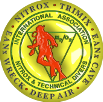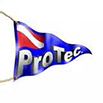ProTec Cave Full Cave Diver
1. Intention of this course
This is a course for all serious cave divers and cave explorers. All the difficulties of cave systems that can be dived are subjects of this course. The course graduate should be able after the termination of this course to dive safely and independently difficult and unexplored caves.
Instruction by ProTec Full Cave Instructor.
2. Training environment
Cave systems with the following characteristics are suitable as training environment: To reach entrancet with the help of rope techniques. The entrance is possible just after a dry cave passage. Sumps and narrow places. Current and silt – out are possible.
4. Accomplishment
The instructor may adapt the course program according to the local conditions. Only the faultless accomplishment of one module of the course program permitted the advance to the next course module.
The instructor is required not to allow any inadmissibility concerning also the equipment.
Deco dives are allowed, however to be avoided if possible. Maximum (short term) course depth is 50 msw..
5. Theoretical lessons
Repeat and exchange experience from the Intro Cave level:
Air supply, air planning
Equipments – spare equipments – redundancy
Buddy situation – solo diving situation
The goal of the Intro and Full Cave courses
Class 1 – Speleology UW
Kinds of caves, formation, geology.
The weather and the possible effect on currents & visibility
Class 2 – Movement in the Cave
To avoid silt – out
Fatigue caused by long tracks – counter measures, time planning
To overcome safely the dangerous places (silt, currents, and restrictions).
To master siphon’s.
Class 3 – Orientation and to Dive Safely in the Caves
Advanced application of reels & markers (full program, gap’s- to bridge a gap in the main line, jump to other main line’s, perform search pattern with a gap/jump reel)
Survey of under water cavees
Class 4 – Safety
Cave diving = solo diving, buddy help in emergency cases, situation studies.
Buoyancy control at buddy help (to search for stop points, to coordinate the movement).
Rescue and recover techniques in all situations (narrow places, sump, dry passages).
UW communication, arrangements.
Deco dives, cave deep diving (it does not replace a deep diving course – see prerequisites)
Class 5 – Logistics
The own equipments – transport and installation, all types of gear mount UW – side mount, …..)
Emergency management – equipments, helper, communication, transport, records.
6. Practical lessons
Equipment
Apart from/instead of the standard equipments the following are to be used/carried with:
Two independent double cylinders (min.2×12 L) – (50 bar( to be used as alternative.
An octopus with 2m. air – pressure hose.
Apart from the primary light (30 – 50 Watt for min. 120 minutes), a spare lamp + position light.
Thick neoprene hood or helmet.
Spare knife (linen cutter).
Mark arrows
Spare mask
Writing board / dive slate
Primary reel for minimum 2×150 meter, spare reel, jump/gap reel.
Deco bottle can be placed at / near the exit.
The diver should be able to handle all the equipment items, the valves also, without any strange assistance.
Generally applies
Max. penetration limit for Cave 2 is about 500 meter. Dependent on deco time
Max. 30 minutes deco planning. Line guidance as usual with the group.
Theory part for each UW practise module
Planning: To discuss the way with sketches, air management, to specify the tasks and positions of each particularly diver, to check abort –emergency plan.
Briefing:(short before the dive/in front of the place): To repeat the important points inclusively an equipment check.
Debriefing: To recognize the mistakes and improvement possibilities, to revise them.
Quality requirements
Best buoyancy: Sediment should not be whirled up and uncontrolled contact with environment should not be allowed.
The divers should always completely control, the dive, without sign of stress or Nitrogen anaesthesia, so to act with self-assurance.
The permission to the next difficult course module can just be given after the positive termination of the module before.
After a negative result, the diver should be sent to the surface or a break off should be made.
At cave dives never course intentionally emergency situations (for example; to turn off cylinder valves). Just simulate.
Never simulate an emergency situation without prior arrangement (briefing).
Module 1
Maximum distance from entrance 100 meter.
To check up all the Cave 1 skills.
To get out with buddy breathing. To exercise buddy and self- help, rescue and recover techniques.
Module 2
To master silt –out situations.
Behavior at poor visibility, loss of light.
To operate the own equipment by zero visibility and repair the simulated problems.
Module 3
Long tracks –cave diving:
The diver dives simple tracks – to penetrate maximum 500 m in the cave, to exercise reel techniques, to connect several reels if necessary.
Module 4
To master sumps
Artificial or real sumps on about 400 meter track.
Module 5
To overcome restirctions.
Side mount, pushing the equipement foreward, to exercise diving techniques
Module 6-7
To apply the skills, to gather experience – to carry out further dives, to explore the caves within the course level.
The Instructor may divide some exercises, if necessary, between several single dives. 2 students maximum per instructor (recommended 1:1). Additionally, a dive supervisor as rescue diver.
7. Courseware
Visit DSC web site for price list
Lectures recommandées:
– NSS Cave Diving Manual
– NSS Cave Communication Manual
Lecture obligatoire :
– DSC manuel cave diving version française





